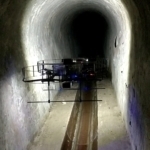Digital Status Symbols
Digital status symbols refer to the use of digital technology and online platforms to display or enhance one’s social status. This can include things like posting photos of luxurious vacations or expensive cars on social media, using certain brands or models of smartphones or other digital devices, or having a large number of followers or likes on social media.
The use of digital status symbols has become increasingly common in today’s society, as people increasingly use technology and the internet to communicate and connect with others. For some people, digital status symbols can serve as a way to showcase their success or achievements, and to signal their social status to others.
However, there are also potential pitfalls associated with the use of digital status symbols. One of the main issues is that they can create unrealistic expectations and pressure to maintain a certain image online. Many people may feel the need to constantly post updates and photos that portray their lives in a positive light, even if it is not an accurate reflection of their experiences.
Another pitfall is that the use of digital status symbols can promote materialism and a focus on superficial appearances. By emphasizing expensive possessions and experiences, digital status symbols can contribute to a culture of consumerism and superficiality, rather than fostering meaningful connections and relationships.
In summary, the use of digital status symbols can be seen as a way for individuals to display their social status and success. However, this can also create unrealistic expectations and pressure, and promote a focus on materialism and superficial appearances.
Drone surveillance refers to the use of drones or unmanned aerial vehicles (UAVs) equipped with cameras or other sensors to collect data or monitor a particular area. Drones are increasingly being used for surveillance purposes in a variety of settings, including law enforcement, military operations, and disaster response.
One of the main advantages of drone surveillance is that it allows for the collection of data and information from difficult-to-reach or dangerous areas. Drones can be deployed quickly and easily, and can provide real-time information about a particular area or situation. This can be useful for monitoring and responding to events such as natural disasters, terrorist attacks, or other incidents.
However, there are also potential pitfalls associated with drone surveillance. One of the main concerns is the issue of privacy and surveillance. The use of drones for surveillance can raise concerns about the collection and use of personal data, and the potential for abuse or misuse of this information.
Another issue is the potential for drones to be used for malicious purposes, such as spying or gathering intelligence. The ease of use and accessibility of drones means that they can be used by individuals or organizations for nefarious purposes, which could pose a threat to security and privacy.
In summary, drone surveillance can be a useful tool for collecting data and monitoring events in difficult-to-reach or dangerous areas. However, the use of drones for surveillance also raises concerns about privacy and the potential for abuse or misuse.
People can create any number of virtual personas online and can purchase or otherwise acquire an ever-expanding variety of digital versions of real or imaginary goods.
Whether to egocast, personalize their digital personas, or to equip themselves with the best tools to win their online games, more and more people are willing to pay real cash for virtual attire, accessories, tools, and other goods.


